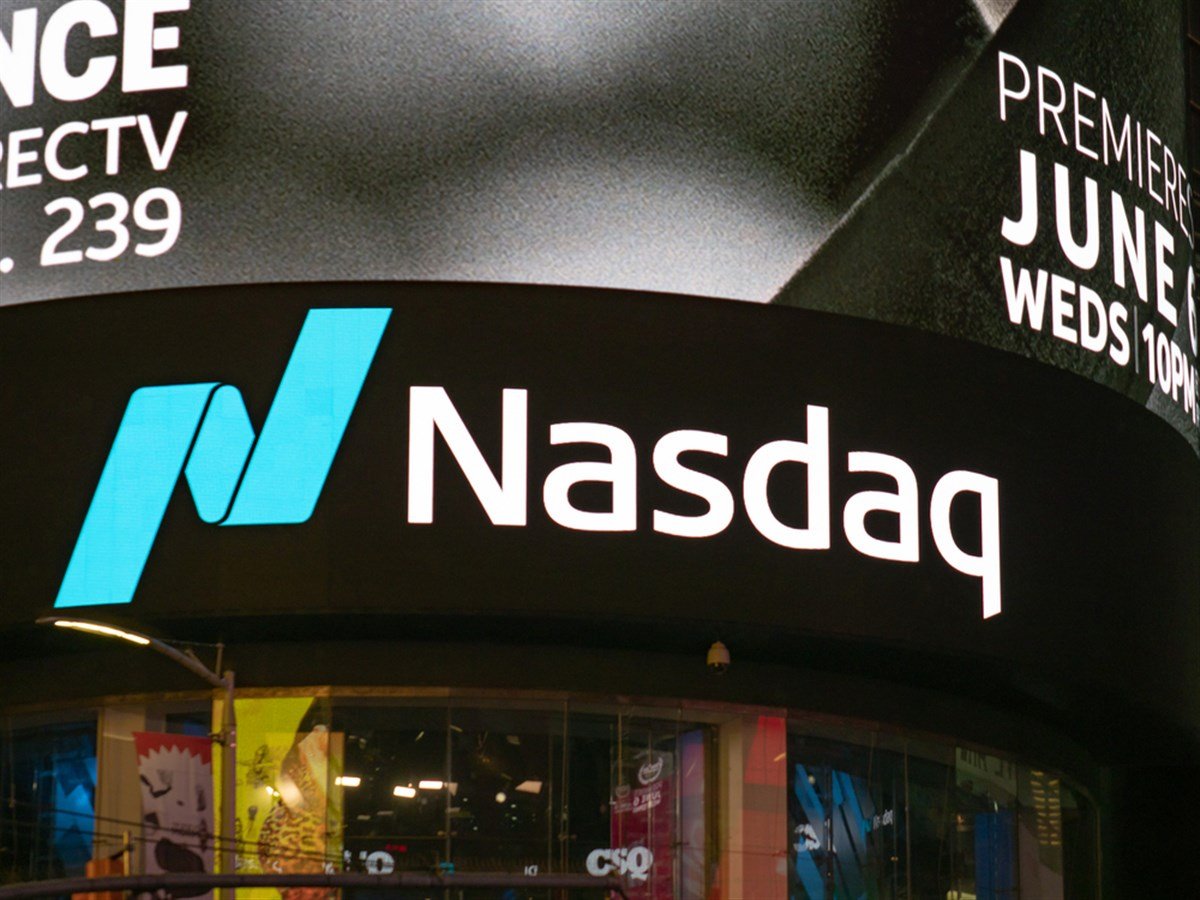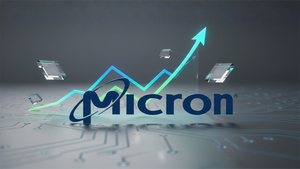
The National Association of Securities Dealers Automated Quotations (NASDAQ) is a global stock exchange, a marketplace where traders buy and sell securities. Officially opened in 1971, the Nasdaq made history as the first electronic, global market exchange, providing previously unheard-of accessibility to major markets. Though its design initially faced skepticism, it is now the world’s largest exchange for public tech and computer-based companies.
Read on to learn more about the history and future of Nasdaq, what separates it from the stock exchange history of other major markets — and what you need to know as an investor to use this exchange effectively.
What is the Nasdaq?
The Nasdaq is a stock exchange located in New York City. Its primary function is to provide expanded, digital access to asset trading, including stocks, options contracts, futures contracts and other financial instruments like exchange-traded funds (ETFs) and fixed-income products.
Unlike traditional stock exchanges, where trading occurs on a physical trading floor, the Nasdaq was unique because it introduced an electronic market. This means that instead of requiring traders to file their trades on a physical trading floor, traders could use an online marketplace to input buy and sell orders independently and from anywhere. This setup allows for faster execution of trades and greater accessibility for investors worldwide — most major world financial markets now use an online trading system inspired by the Nasdaq.
The History of the Nasdaq
The Nasdaq was founded by the National Association of Securities Dealers (NASD) on February 8, 1971. It was the world's first use of the electronic market model, introducing a computerized trading system that allowed for faster and more efficient trading compared to traditional floor-based exchanges.
The Nasdaq grew rapidly during the 1980s and 1990s, particularly during the dot-com boom of the late 1990s. Many technology companies, especially those in the internet and software sectors, chose to list on the Nasdaq, leading to its reputation as a hub for high-growth and innovative firms. Today, the Nasdaq is informally known as the “tech industry stock market,” a nod to its higher concentration of technology startups.
Over time, the Nasdaq underwent various regulatory changes and improvements to enhance market integrity and improve investor confidence. It instituted a list of requirements that companies must meet to be listed, similar to the NYSE’s required for companies to “go public.” It also created several market indexes, including the Nasdaq Composite Index, which tracks the performance of all stocks listed on the exchange.
How the Nasdaq Operates
If you’ve ever used an online broker to buy or sell shares of stock, you’re already familiar with the basics of how the Nasdaq operates. The Nasdaq operates as an electronic trading platform where securities’ trades are executed electronically through computerized systems. This eliminates the need for physical trading floors and allows for faster and more efficient transactions. It also makes the market more accessible — thanks to the unique framework set in place by the Nasdaq, you can trade from around the world so long as you have online access.
The Nasdaq exchange uses a central processing system to execute, track and manage trades. This centralized model enhances transparency and price discovery by consolidating trading activities in one platform. Orders placed on the Nasdaq are matched automatically based on price and time priority. This means that the best available buy order is matched with the best available sell order, ensuring efficient order execution, minimized spreads and fewer delays.
Before introducing the Nasdaq’s electronic exchange model, traditional stock exchanges relied on floor trading, where traders physically gathered on a trading floor to execute orders. In contrast, the Nasdaq's electronic model eliminates the need to trade in a physical location, allowing for faster order processing and accessibility to a global audience. Following the introduction of this model, other exchanges followed and introduced their own online marketplace.
The Importance of the Nasdaq Composite Index
If you’d like to quickly understand the direction that the Nasdaq is moving on any particular day, look at the Nasdaq Composite Index. The Nasdaq Composite Index is a market-capitalization-weighted index that includes more than 2,500 stocks listed on the Nasdaq exchange. Some large names included in the index that you might be familiar with include Apple (NASDAQ: AAPL), Microsoft (NASDAQ: MSFT) and Tesla (NASDAQ: TSLA).
With so many high-profile companies, it’s easy to see why the Nasdaq Composite Index is an important indicator of overall economic health. It’s particularly useful as a benchmark to track the tech sector's performance, making it a more volatile index when compared to other established indexes like the S&P 500.
There are specific criteria that stocks must meet to be listed in the index, including:
- Being a common stock, tracking stock or American depository receipt (ADR) currently listed on the Nasdaq. REITs and ETFs are excluded from consideration.
- The company must not be classified as a financial company.
- Each security must have a minimum average daily trading volume of 200,000 shares, calculated every quarter.
Major Milestones in Nasdaq's History
The Nasdaq exchange's history dates back to 1971, when it was officially launched by the National Association of Securities Dealers (NASD). However, the Nasdaq exchange didn’t open to retail investors until 1980, when a real-time “Level 2” data feed was introduced. This leveled the playing field between investors, providing real-time updates on bid-ask spreads.
By the mid-1980s, the electronic exchange was fully operational, and its model of allowing investors to trade stocks electronically appealed to those outside of New York in particular. One of the most significant Nasdaq milestones in the 1980s was Microsoft’s initial public offering in 1986. Microsoft chose the Nasdaq as its trading exchange, lending major legitimacy to the relatively new exchange.
The late 1990s saw a surge in technology stocks, with many dot-com companies listing on the Nasdaq. Rapid investor interest and market overvaluation led to the building of the dot-com bubble; the Nasdaq index rose 86% in 1999 alone. Eventually, the bubble “burst” in 2005—the Nasdaq index fell to 1,139.90 units in a single day on October 4th, crashing 77% from its peak value.
Nasdaq's Role in the Tech Industry
While the Nasdaq is informally known as the “tech exchange,” it doesn’t limit its inclusion to only technology stocks — any non-financial stock may qualify for inclusion. However, tech companies are partial to the Nasdaq for several reasons. In its inception, the Nasdaq had relatively flexible listing requirements compared to other exchanges, allowing younger and growth-focused companies to list their shares. This flexibility and the Nasdaq’s unique electronic trading model attracted innovative firms looking to raise capital and gain visibility in the market.
Tech companies have considerably influenced the Nasdaq's performance due to their market capitalizations, trading volumes and impact on sector-specific indexes like the Nasdaq-100. While the regulations and requirements to list on the exchange have expanded since its inception, its early access during the tech boom of the 1990’s and 2000’s led to major market makers being listed on and influencing the exchange.
Future Trends and Projections for the Nasdaq
In the future, the Nasdaq is predicted to be a recurring hub for innovation and tech-forward IPOs. Waystar Technologies, Databricks and BMC Software are three expectant tech IPOs likely to be listed on the Nasdaq exchange. These companies, along with newer tech offerings and the continued growth of major names like Amazon.com, are projected to help the Nasdaq reach new heights in 2024 and beyond.
Beyond 2024, the Nasdaq is expected to be the introductory sphere for a variety of new tech advancements. Artificial intelligence, blockchain technology and biotechnology companies are likely to list on the Nasdaq thanks to its reputation as a long-standing exchange for innovation. Regulatory changes, especially regarding data privacy and the use of blockchain, will need to be continuously monitored to ensure corporate longevity.
Conclusion
The Nasdaq is a major, global exchange associated with cutting-edge technology, and it is likely to remain dominant in this industry. While this basic Nasdaq overview provides you with the basics of the Nasdaq and how it works, you can continue to learn more by exploring the stocks included on the exchange and in the Nasdaq-100. This market capitalization-weighted index will introduce you to some of the most influential market makers also found on the exchange.






